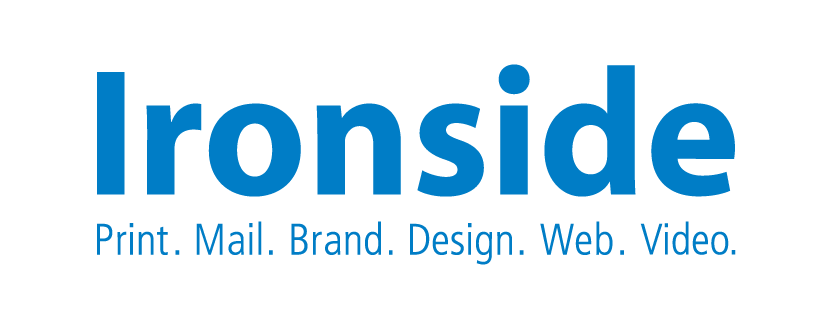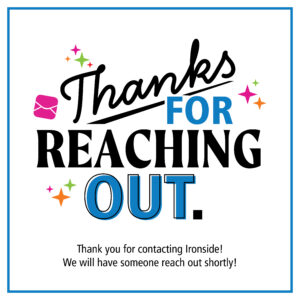Sign up for
marketing insights

Planning for a year of success through smart marketing investments.
You are really good at what you do. That’s why you’re in business. Every business owner believes in their brand, right? Otherwise, what would be the point of the countless hours and relentless determination that you invest daily?
Now imagine if you could convey the passion you have for your brand into a message that is not only heard and seen but believed and felt by your target market – the ones who need what you offer.
That’s the beautiful thing about effective and creative marketing communication strategies. They hit the right people, at the right time, in the right way. When done well, your target market will feel the same emotions toward your brand as you do. And before you know it, you have turned a stranger into a full-blown brand advocate.
So how is it done? Well, the process looks vastly different from one business to the next, but every marketing strategy contains these four key components: Awareness, Opportunity, Conversion, and Retention.
#1
Awareness
In business, the phrase, “If we build it, they will come,” couldn’t be further from the truth. The fact of the matter is, if people don’t know who you are or feel a connection to your brand, they’re not going to walk through your doors. Brand awareness is arguably the most important step in any effective strategy. It’s your first impression; your chance to create a positive perception of your brand’s core value promise and competitive advantages. Imagine your marketing strategy as a garden, and every component of the strategy is a seed. Brand awareness is the fertilizer that will make those seeds blossom to their fullest potential.
A strong brand awareness strategy is achieved through creative storytelling to humanize your brand. Authenticity is impactful – remember that. This can be done in a multitude of ways and requires a lot of variation in content and channel distribution. When executed properly, brand awareness efforts will change your target market’s perception from, “Who is that?” to “I need that company in my life.”
#2
Opportunity
You’ve successfully created a strong brand perception and your audience is wowed by your brand. How do you keep the momentum going and turn this audience into paying customers? Answer: A methodically crafted opportunity marketing strategy. Opportunity marketing is the practice of targeting those specific customers who have a need for the solution that you provide.
Consumers want brands that understand what they need. When executed properly, opportunity marketing will convey consumer pain points in a way that captures consumer intent before they even realize that you are the solution. Ta-da! You made them recognize that they need you. Bonus points if you conveyed your message in a way that makes them feel like they are missing out without you. This establishes an immense amount of brand credibility and trust – the top two characteristics that lead to successful companies.
#3
Conversion
You have a strategic and tactical plan in place to drive traffic in your direction. Your focus on compelling content, programmatic advertising, email campaigns, and direct mail are getting relevant leads in front of you. However, your conversion rates aren’t as stellar as you hoped. Sound familiar? Here’s why: You haven’t implemented conversion marketing tactics. Don’t worry, you’re not alone. This is a very commonly missed step.
Conversion marketing is the art of marketing with the aim of maximizing the percentage of leads taking the desired action. Whether it’s to provide an email, purchase a product, make an appointment, or just call you. Uncovering what’s working and what’s not on your digital platforms takes analytical data testing and constant optimization. When executed properly and consistently, conversion rates are bound to grow on your site. If your sales process has aspects that are facilitated in person rather than online, conversion marketing collateral such as branded sales presentations, signage, and positive customer experience can make all the difference between closing or losing the deal.
#4
Retention
Your (virtual or physical) doors have been infiltrated with consumers who believe that you are the segment leader and have converted into paying customers. You have delivered on your promises and given them your best. How do you nurture this relationship, so they scream from the rooftop how in love they are with you? (Figuratively, of course. But if it happened in a literal sense, it would be great for business). This is where a strong retention marketing plan comes into place; providing your customers with consistent reminders that they made the right choice with you.
Your only interactions with your customers shouldn’t be asking them for their money – what kind of relationship is that? You need to communicate a mutual love for your customers to show them that you care. This personifies your brand and creates customer loyalty. This can be done in many ways. Here are a few examples: regularly produce relevant and informative content on multiple channels to educate your customer base, keep in touch with birthday and holiday wishes, share interesting happenings in your industry, and even post some humorous and lighthearted social media content from time to time.
When done correctly, this “four key-component” strategy can be executed in a way which can be monitored, measured, and adjusted for maximum results to increase your bottom line well beyond what you’ve invested. This is no task for your office manager to tack onto his or her to-do list. The strategic planning and execution of an effective marketing infrastructure takes an entire team of professionals to develop and implement properly.
This is what we do at Ironside. We do it really well. That’s why we’re in business.
Schedule a discovery meeting with us today, and let us be the most valuable marketing employee you’ve ever hired. It’ll be your best New Year’s resolution yet!
More Insights


